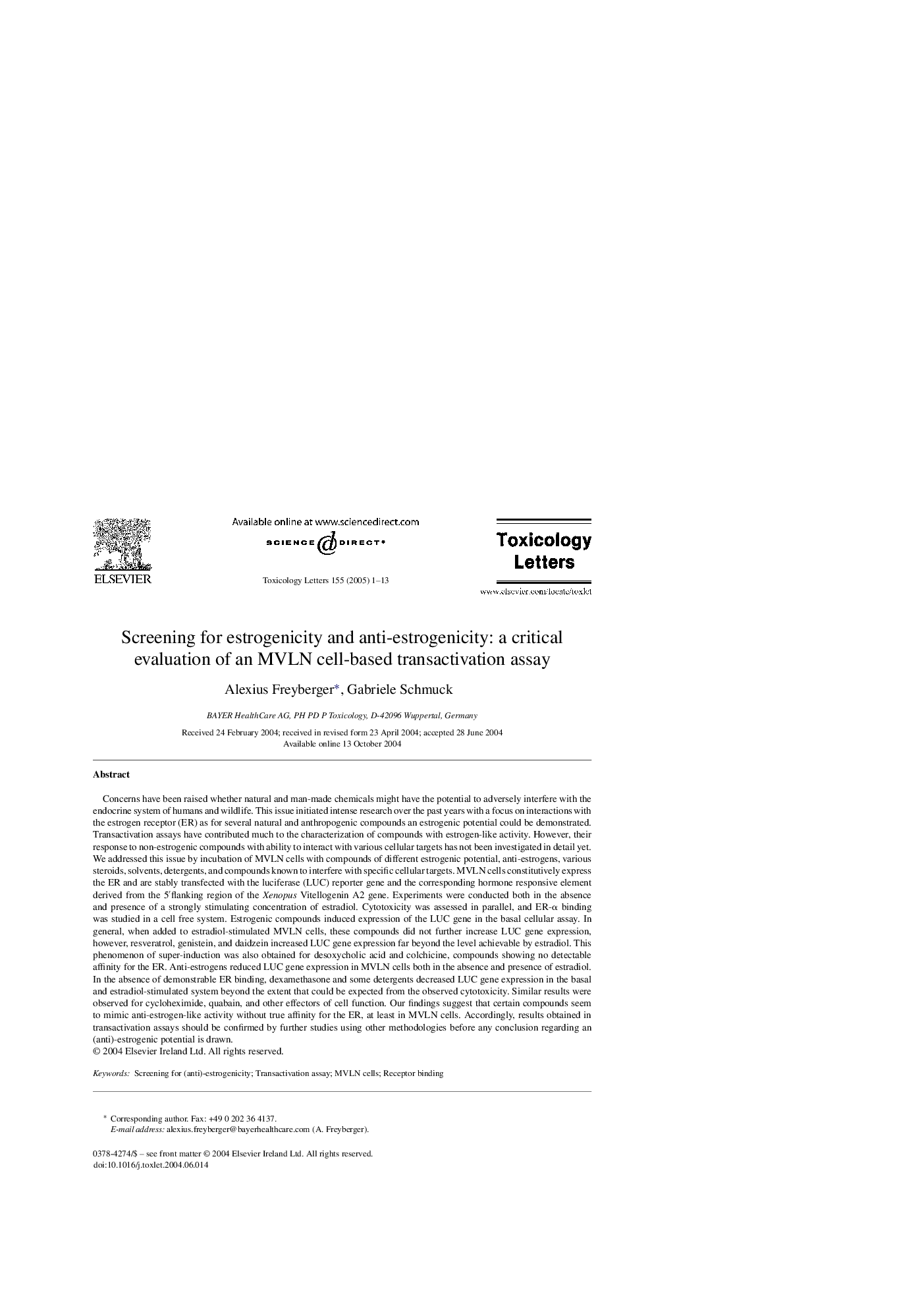| کد مقاله | کد نشریه | سال انتشار | مقاله انگلیسی | نسخه تمام متن |
|---|---|---|---|---|
| 9037556 | 1133445 | 2005 | 13 صفحه PDF | دانلود رایگان |
عنوان انگلیسی مقاله ISI
Screening for estrogenicity and anti-estrogenicity: a critical evaluation of an MVLN cell-based transactivation assay
دانلود مقاله + سفارش ترجمه
دانلود مقاله ISI انگلیسی
رایگان برای ایرانیان
موضوعات مرتبط
علوم زیستی و بیوفناوری
علوم محیط زیست
بهداشت، سم شناسی و جهش زایی
پیش نمایش صفحه اول مقاله

چکیده انگلیسی
Concerns have been raised whether natural and man-made chemicals might have the potential to adversely interfere with the endocrine system of humans and wildlife. This issue initiated intense research over the past years with a focus on interactions with the estrogen receptor (ER) as for several natural and anthropogenic compounds an estrogenic potential could be demonstrated. Transactivation assays have contributed much to the characterization of compounds with estrogen-like activity. However, their response to non-estrogenic compounds with ability to interact with various cellular targets has not been investigated in detail yet. We addressed this issue by incubation of MVLN cells with compounds of different estrogenic potential, anti-estrogens, various steroids, solvents, detergents, and compounds known to interfere with specific cellular targets. MVLN cells constitutively express the ER and are stably transfected with the luciferase (LUC) reporter gene and the corresponding hormone responsive element derived from the 5â²flanking region of the Xenopus Vitellogenin A2 gene. Experiments were conducted both in the absence and presence of a strongly stimulating concentration of estradiol. Cytotoxicity was assessed in parallel, and ER-α binding was studied in a cell free system. Estrogenic compounds induced expression of the LUC gene in the basal cellular assay. In general, when added to estradiol-stimulated MVLN cells, these compounds did not further increase LUC gene expression, however, resveratrol, genistein, and daidzein increased LUC gene expression far beyond the level achievable by estradiol. This phenomenon of super-induction was also obtained for desoxycholic acid and colchicine, compounds showing no detectable affinity for the ER. Anti-estrogens reduced LUC gene expression in MVLN cells both in the absence and presence of estradiol. In the absence of demonstrable ER binding, dexamethasone and some detergents decreased LUC gene expression in the basal and estradiol-stimulated system beyond the extent that could be expected from the observed cytotoxicity. Similar results were observed for cycloheximide, quabain, and other effectors of cell function. Our findings suggest that certain compounds seem to mimic anti-estrogen-like activity without true affinity for the ER, at least in MVLN cells. Accordingly, results obtained in transactivation assays should be confirmed by further studies using other methodologies before any conclusion regarding an (anti)-estrogenic potential is drawn.
ناشر
Database: Elsevier - ScienceDirect (ساینس دایرکت)
Journal: Toxicology Letters - Volume 155, Issue 1, 15 January 2005, Pages 1-13
Journal: Toxicology Letters - Volume 155, Issue 1, 15 January 2005, Pages 1-13
نویسندگان
Alexius Freyberger, Gabriele Schmuck,